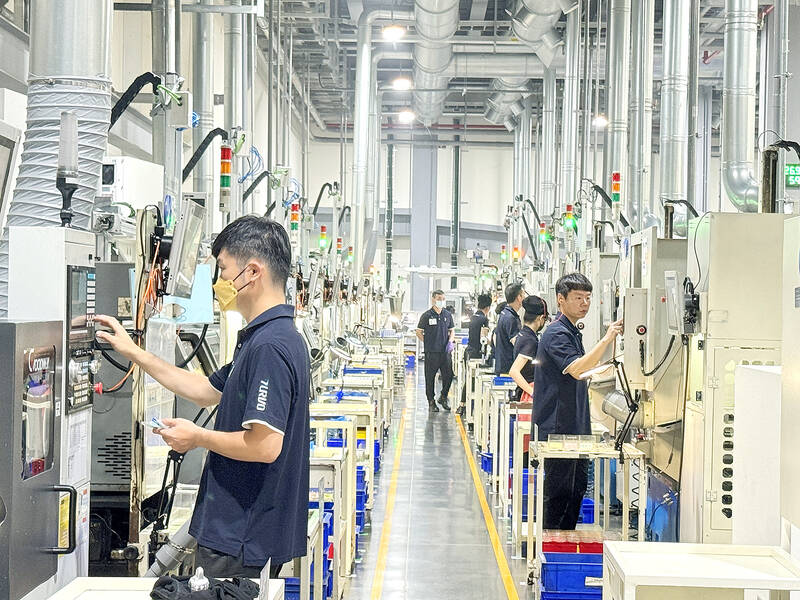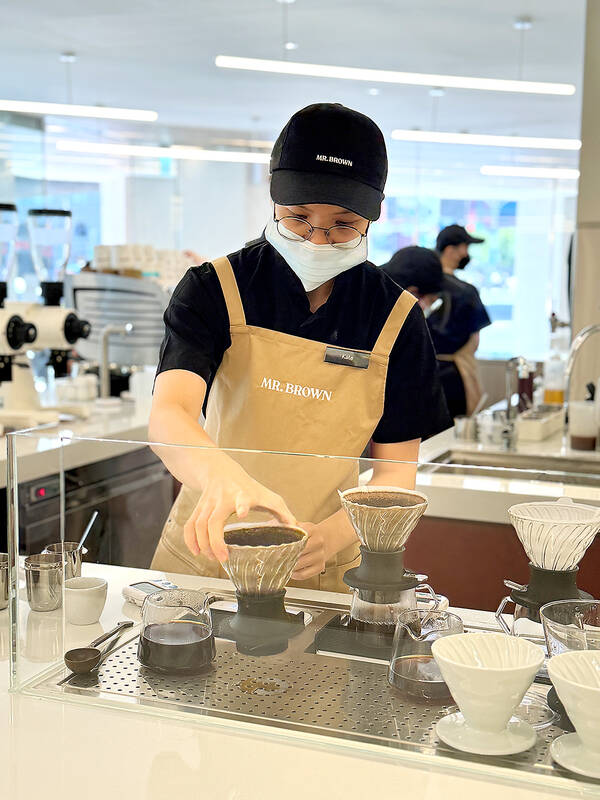Last week, the government rejected a petition to amend the law that would allow permanent residents a path to citizenship. This was widely expected, but it came amid a flurry of negative trends about the future of the nation’s labor force. There was much ironic commentary on the juxtaposition of that decision with its idiotic, abusive reasoning with the urgent demand for labor across a wide range of fields.
This demand was highlighted by the government’s plans for five NT$10 billion (US$307.6 million) funds to promote development in key fields, including artificial intelligence (AI), “smart” healthcare and green growth announced last week by Premier Cho Jung-tai (卓榮泰). Minister of Economic Affairs J.W. Kuo (郭智輝) on Wednesday said that Taiwan Semiconductor Manufacturing Co (TSMC, 台積電) would build a new plant in Taiwan every year over the next decade, in part to supply the AI industry. That industry is already suffering from massive talent shortages, according to an excellent AmCham piece published last month.
COMPETING FOR LABOR

Photo: Yang Ya-min, Taipei Times
The focus may be on tech people, whose mere existence confers wealth and status, but where is Taiwan going to get the construction workforce to make these plans real? Not only is the construction industry short tens of thousands of laborers, but engineers are shifting out of government infrastructure to private sector jobs where the money is better, or to technology firms. The result is delays to major projects such as MRT construction in the Taipei basin. Massive fab construction is going to exacerbate these problems.
On Tuesday the health insurance authorities said they do not rule out discussions with the Ministry of Labor on easing restrictions on foreign workers to help with the nursing workforce shortage. The nursing shortage has been a reality in the health system for decades. Prominent figures in the nursing community have been privately talking about importing nurses for years, but Taiwan is not an attractive destination for skilled nurses. Just another case of a crisis that has drifted into permanence.
Similarly, Silks Hotel Group Chairman Steven Pan (潘思亮) urged the government last Tuesday to loosen restrictions on foreign students and foreign interns. According to government figures, over half of vacant jobs are in the service sector. This is hardly surprising, given the long hours, low pay and constant flow of small indignities that characterize those jobs. Hence, labor policy, especially as advocated by big business, is little more than a constant search for new marginalized groups to exploit.

Photo: Yang Ya-min, Taipei Times
The problem with this attitude is that across all the basic, medical and service industries, Taiwan competes with more attractive destinations such as the EU for migrant labor. For example, Filipino nurses, one mooted solution to the nursing shortage, are in high demand in developed countries. Skilled Filipino engineers can make far more on cruise ships or fixing ventilation systems in Middle Eastern oil states than they can in Taiwan. One of the ironies of the nation’s reliance on migrant labor, imported in part to hold local salaries down, is that migrant worker pay and working conditions have become unattractive.
Nor is it just the wealthy states that attract migrant labor. Consider: an Indonesian migrant construction worker can make up to 160 Malaysian Ringgit (roughly NT$1,172) a day in the Malaysian construction industry, which, like Taiwan’s suffers from labor shortages. At current exchange rates that’s quite competitive with Taiwan’s low migrant worker wages, and Malaysia is a Muslim country with deep cultural affinities to Indonesia.
Further, many of their home states are on the rise. Vietnam stopped providing brides for the Taiwanese marriage market a decade ago as its economy boomed. Thailand, which people often think of as an exporter of labor, has been an important destination for migrant labor from neighboring countries since the 1990s. As these states grow their economies, their exports of labor will shrivel. Moreover, they are following the East Asian states into the low fertility abyss. At present most Asian nations exhibit fertility rates below replacement level. Where will new migrant workers come from?
Last week National Development Council (NDC) Minister Paul Liu (劉鏡清) observed that at the moment the nation’s semiconductor industries had enough labor, but as demand for labor grows, it may demand skilled workers other industries need. There are not enough skilled workers to go around as it is.
NATIONAL LABOR PLAN?
The problem is not just the “labor shortage,” an existential crisis that manifests differently across each industrial sector. It’s that each sector confronts this crisis individually.
What is needed is a national labor plan that puts immigration at the forefront and offers a reasonable and clear route to citizenship, especially for people with several children under two, who can easily acculturate. Our migrant worker policy at present imports laborers in their prime reproductive years, but then restricts them from having families. It should be the opposite.
Those of us who have for years pushed for an easier route to citizenship for permanent residents are doing it wrong. We need to push for such a plan for imported labor first. That is what is best for Taiwan and once implemented, it is likely that long-term residents will eventually be added.
We also need to pressure the government to push up salaries and reduce working hours to make Taiwan competitive, especially with the emerging states to the south.
The NDC has a range of strategies listed on its Web page on labor issues to deal with the problems it correctly identifies.
“Wages are not internationally competitive, countries are competing with each other to recruit talent, complexity of laws and regulations makes residency difficult and the living environment needs improving.”
I am sure my readers will be shocked to learn that wages are not mentioned again after that section.
Indeed, the strategies are little more than a laundry list of subsidies to firms for employment. Two particulars are listed for the NDC’s proposed “New Economic Immigration Act”: relaxing conditions for foreign professionals, and — it almost seems inevitable — making it easier for “overseas compatriots” to come live and work in Taiwan. The racism is not only ingrained, it is formal policy. Again, no doubt my readers will be shocked to learn that is the only mention of immigration in the presentation.
A draft of the New Economic Immigration Act is available online. It consists largely of changes to visa conditions for family members of professionals. The only mention of “immigrant” is in the phrase “investment immigrants.”
The government’s thinking remains mired in the developmentalist mentality, for which foreigners are viewed as disposable labor that comes in at various price points. What it shows is that for those of us who want to see Taiwanese ideas of citizenship grow and change, our real enemy isn’t pervasive racism, but the construction-industrial state and the national government it owns and treats as a combination ATM and slave holding pen.
Notes from Central Taiwan is a column written by long-term resident Michael Turton, who provides incisive commentary informed by three decades of living in and writing about his adoptive country. The views expressed here are his own.